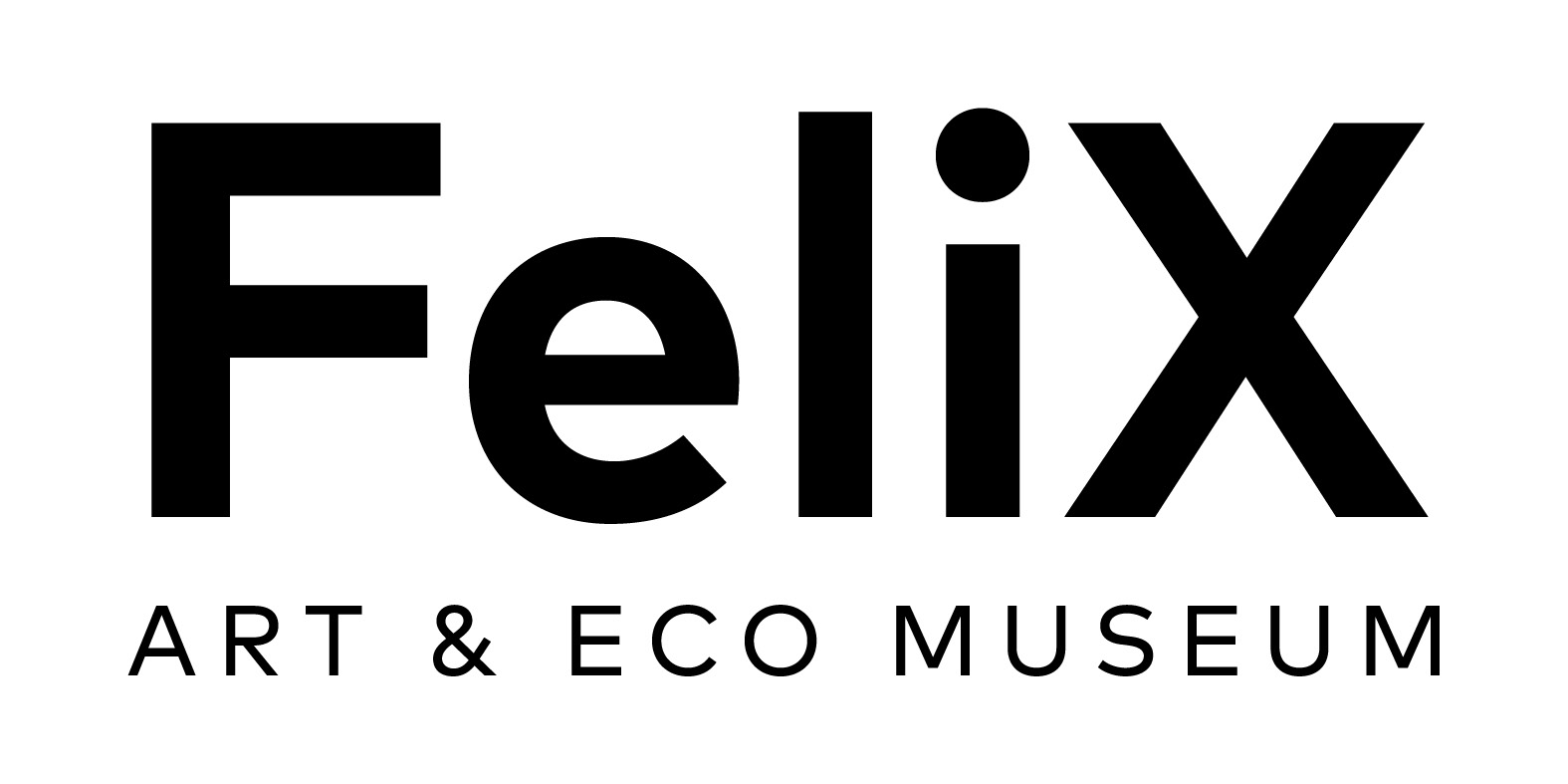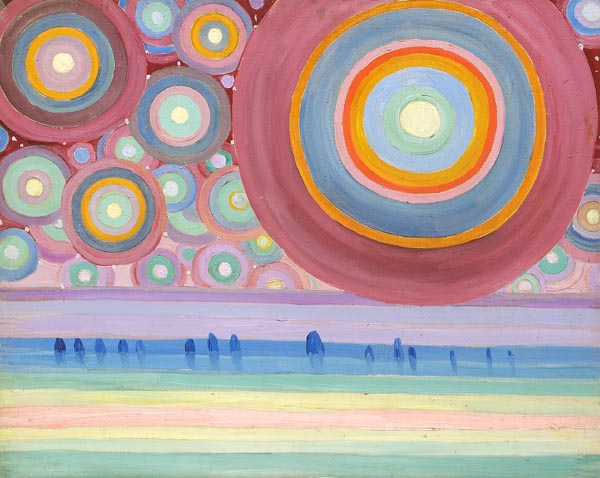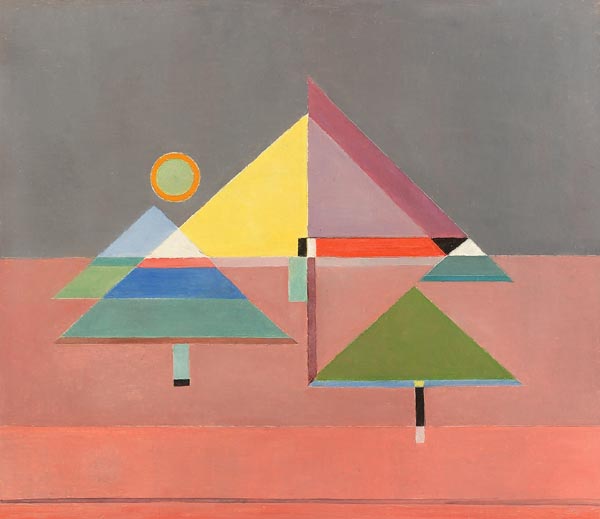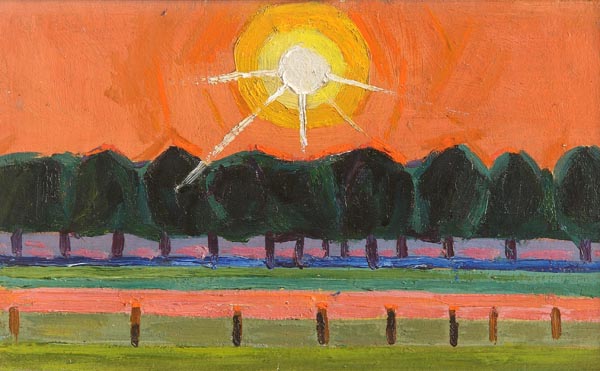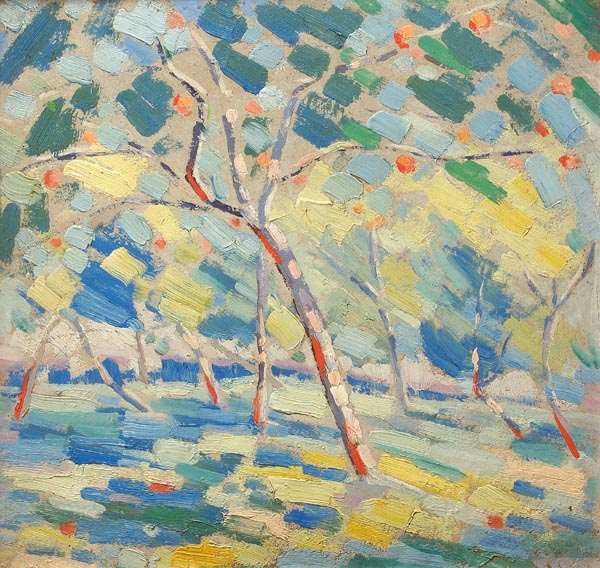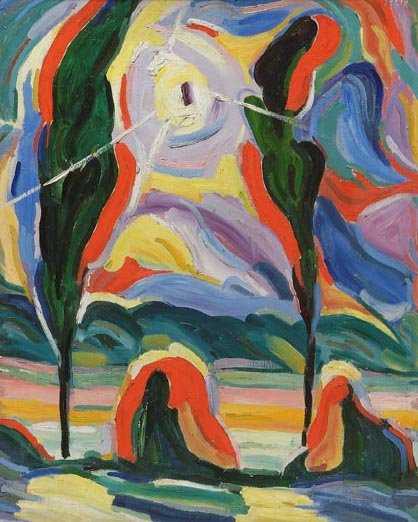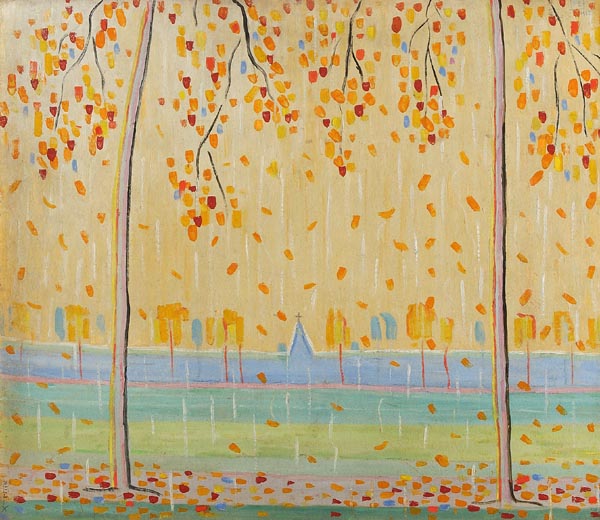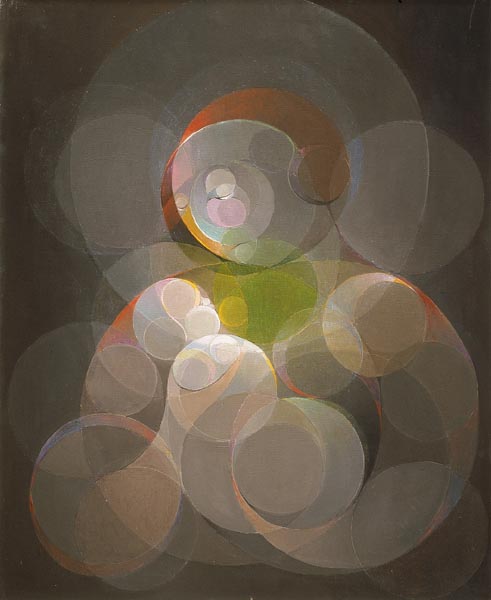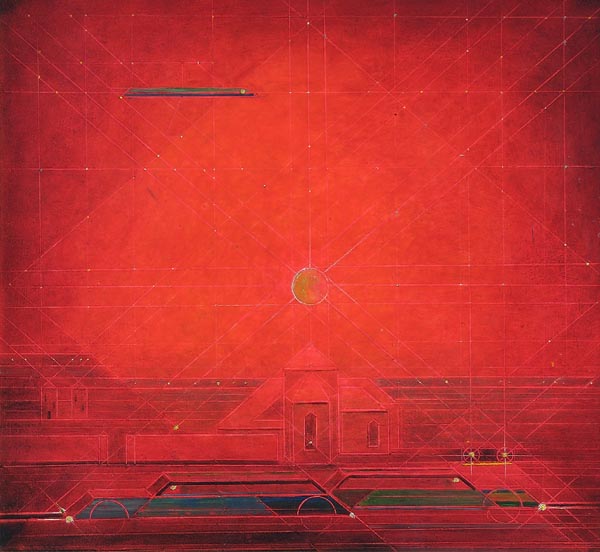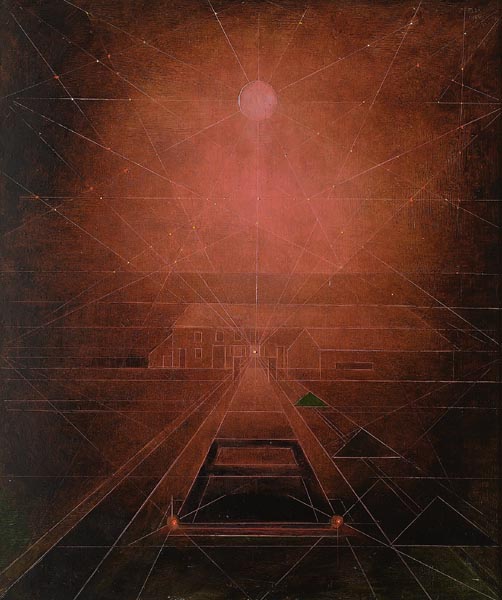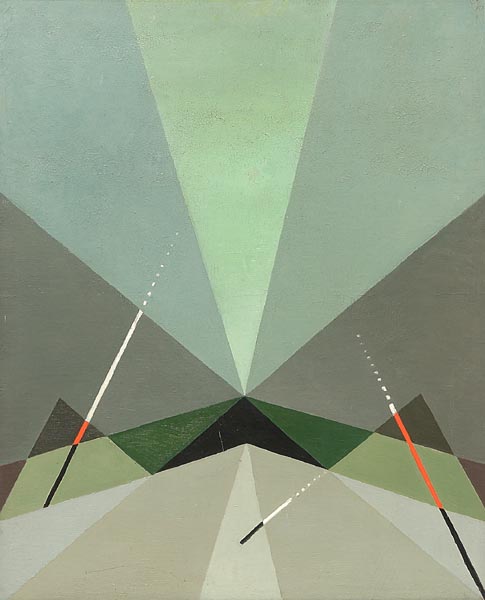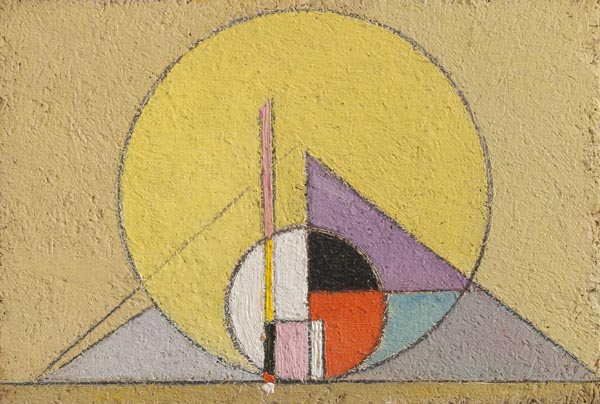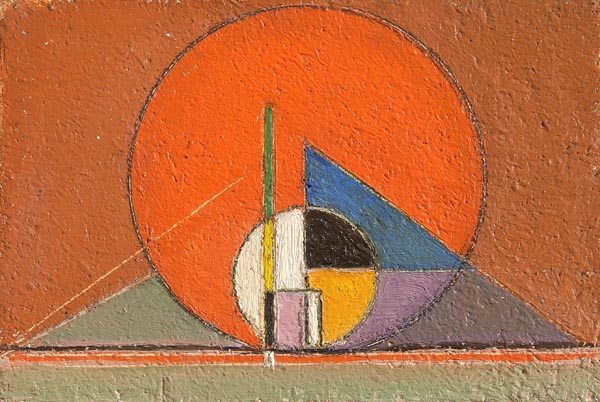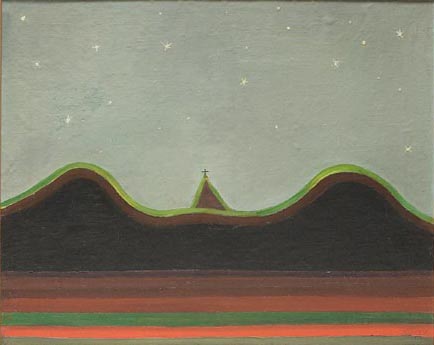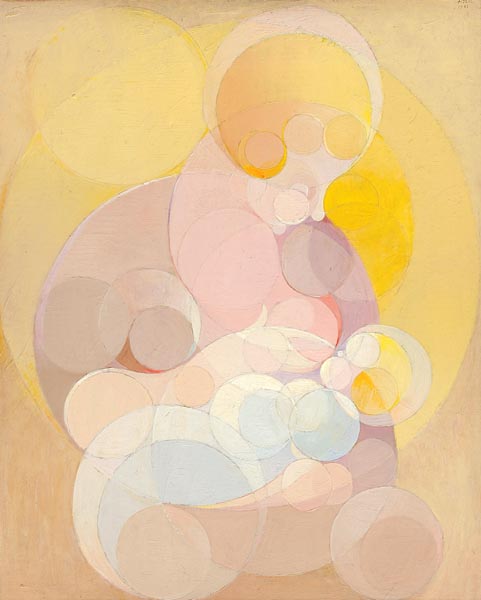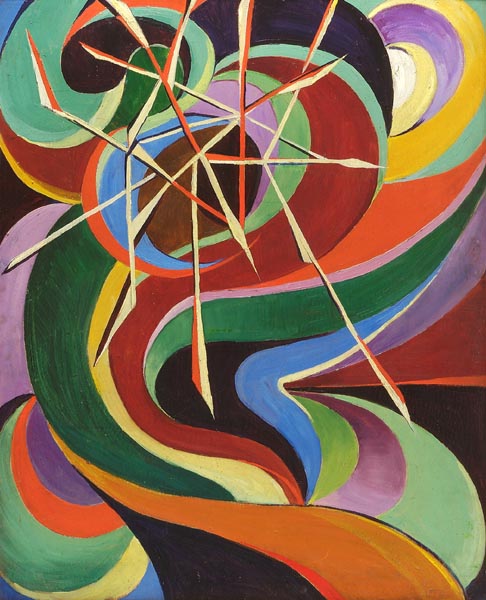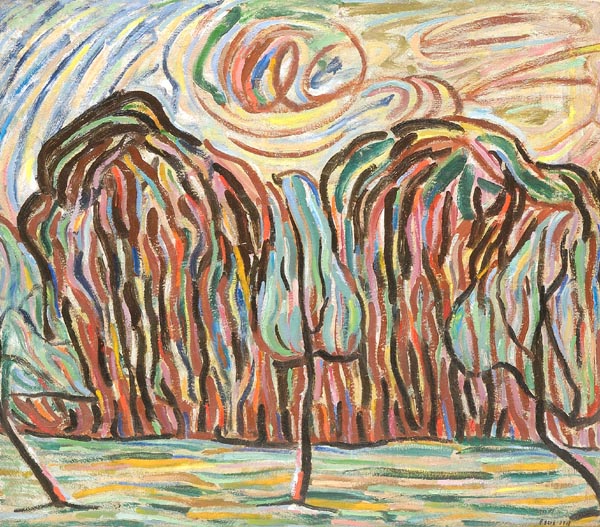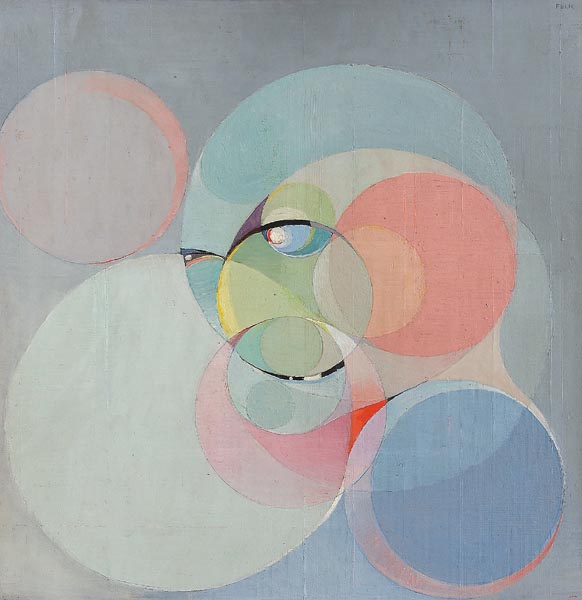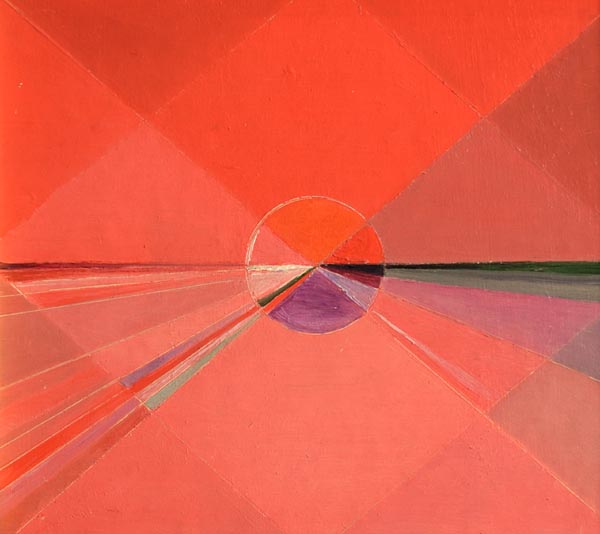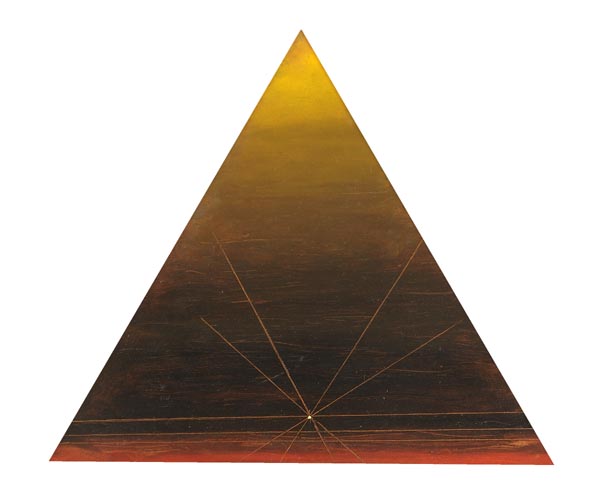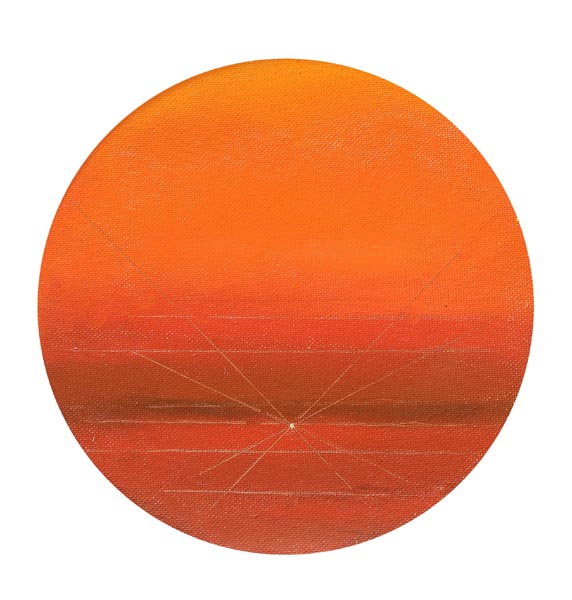Felix the painter
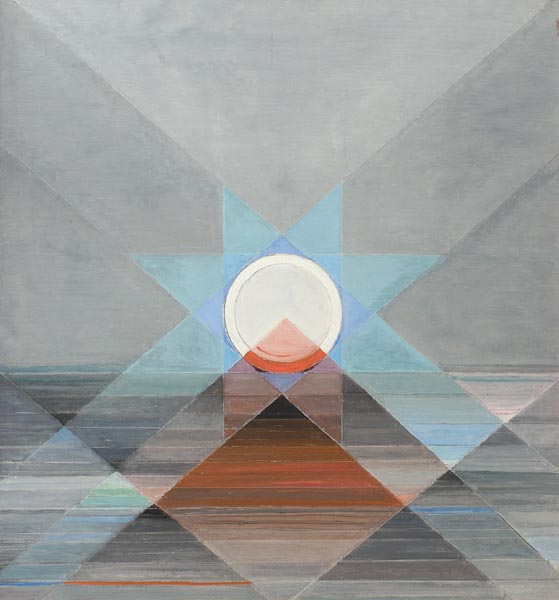
Felix De Boeck (1898-1995)
The autodidact and son of a farmer, Felix De Boeck has a unique artistic trajectory. Encouraged by Prosper De Troyer (1880 – 1961), beginning in 1917, De Boeck switches Post-Impressionism for an expressive Fauvism and Futurism. During the final years of World War I, De Boeck exhibits in Brussels with the group Doe Stil Voort, where he meets other young men such as Jozef Peeters and Victor Servranckx. In 1919, he comes into contact with Pierre-Louis Flouquet (1900 – 1967) and the Bourgeois brothers. Pierre (1898 – 1976) is a writer and Victor Bourgeois (1897 – 1962) is an architect. De Boeck meets the latter in the Brussels Centre d’Art, where he attends a presentation by Theo Van Doesburg (1883 – 1931) on the Neo-Plasticism and De Stijl.
New world
l'Assaut
Drogenbos
Bio
New world
De Boeck paints geometrical and circular abstract masks as a reaction to the economic and social upheaval of the First World War and the desire to ‘build a new world’. His work evolves during a short period (1919 – 1921) towards the abstract via an extreme stylising of the masks and landscapes. Quickly the clean two-dimensional gives way to a sense of depth that is suggested by a play of diagonals and degradations of colour. The abstract space that thus ensues, with a primary emphasis on the central point, becomes a returning mystical element throughout his entire oeuvre. In 1923, De Boeck receives a richly illustrated article in the two avant-garde publications in Belgium, 7 Arts and Het Overzicht.
l'Assaut
After 1925 De Boeck becomes a member of the group L’Assaut, where along with Jean-Jacques Gailliard, Servranckx and Flouquet, among others, he emphasises the link between the expressive arts and theatre. From 1930, his work becomes outspokenly figurative, whereby philosophical and religious themes are symbolically addressed. His figuration becomes, in line with Boleslas Biegas’ (1877 – 1954) ‘sphérisme’, characterised by a circular construction and the use of a compass. Under the influence of Desiderius Lenz’s (1832 – 1928) school of Beuron, he shall use geometry throughout his oeuvre for making idealised portraits and landscapes. After the collapse of the Abstract movement, De Boeck stays in contact with artists and writers such as Herman Teirlinck and Maurice Carème.
Drogenbos
His farmstead in Drogenbos, which already in the 1920’s was visited by Frits Van den Berghe and Albert Daenens, among others, becomes a meeting ground for old and new contacts. This remains true until his death. As with many of his generation he returns to the abstract in the 1960’s, when the pioneers of the movement are rediscovered. Only during his final years (1980 – 1995) does he create a synthesis with the themes of ‘space’ and ‘beginning and ending point’ that is abstract by nature.
Bio
Felix De Boeck was born in Drogenbos on 12 January 1898 on his parents’ farm, where he would later live and work himself. He died 98 years later in Sint-Agatha-Berchem on January 18, 1995.
De Boeck followed primary education until the third year of his studies at the municipal school of Drogenbos. From the fourth year to the rhetoric, Felix studied at the French-speaking Collège Saint-Pierre in Uccle. This was quite an adaptation for him since he only spoke French to a limited extent. As a result of the First World War, he was unable to take up higher studies and took over his parents’ farm. He developed into an artist in a self-taught way.
 Boek Tickets
Boek Tickets
